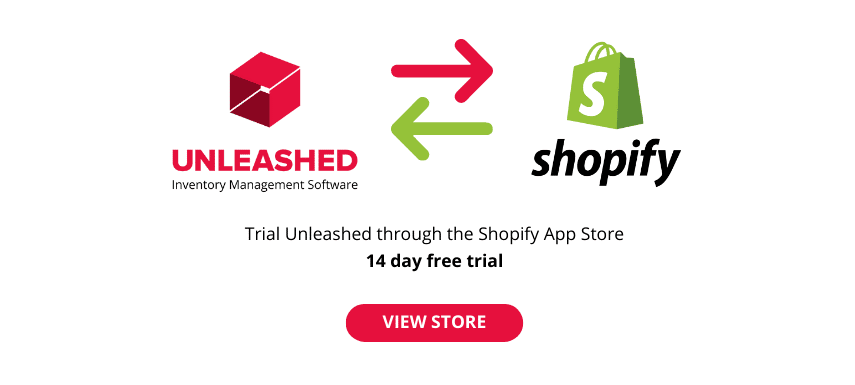
This article was updated in March 2023 to reflect new market trends and industry data.
For B2B these days, considering wholesale eCommerce for sales order management is a must. Not only does it retain key features of traditional B2B like bulk discounting, but it has numerous advantages over its in-person equivalent.
So what does wholesale eCommerce involve, why is it so important, and how do you get started? Read on to find out.
What is wholesale eCommerce?
Wholesale eCommerce is where a business sells goods to another business online in bulk at a discounted price.
In other words, it's traditional B2B wholesale commerce, with one business wanting to buy a product in bulk from another, but the transaction takes place online. The purchasing business then on-sells the goods to its own customers at a profit.
 Wholesale eCommerce offers advantages over its traditional counterpart because your store is available around the clock, and transactions can be more efficient
Wholesale eCommerce offers advantages over its traditional counterpart because your store is available around the clock, and transactions can be more efficient
Bulk eCommerce vs wholesale eCommerce: are they the same?
In short, yes: bulk eCommerce and wholesale eCommerce are the same thing.
It’s worth noting that the phrasing used to describe wholesale eCommerce can vary. It's sometimes called ‘bulk eCommerce’, ‘digital wholesale’ or ‘B2B eCommerce’. These terms all refer to the same model of selling goods in bulk online.
What are the benefits of eCommerce to wholesalers?
There are numerous benefits of eCommerce to wholesalers. The five most important are:
1. Wholesale eCommerce saves time – and therefore cost
Ecommerce transactions are quicker and more efficient for various reasons. The client can search for the required goods, discover the cost, and find out a delivery date within a few minutes. This is far faster than having to wander around a physical store then go to a checkout for payment and delivery.
2. With wholesale eCommerce, information is accessible around the clock
Information about service hours, delivery delays, and other important details for customers can be posted online and be accessible for anyone, at any time.
This has been particularly important through the pandemic given supply chain disruptions and product shortages. Being able to access such information is hugely valuable for businesses that may need to look elsewhere to meet their own customer demands.
Need to manage eCommerce inventory?
3. Clients from around the world can use wholesale eCommerce
Wholesale eCommerce enables business to be conducted across jurisdictions – but note that this can involve taxation complications, as well as language and cultural issues.
The benefits of this are huge, however, given the ability to source materials and products at more competitive prices in some jurisdictions, as well as the fact that different skill-sets and labour are available.
4. Wholesale eCommerce enables a greater range of products
Doing business online enables a far wider selection of products and materials, since these are not restricted by a store’s size and layout, or the local customer base. It enables the delivery of niche products for customers who have specific demands.
5. Wholesale eCommerce gives you more customer data
Perhaps most importantly, wholesale eCommerce enables the collection of customer data, which supports greater efficiency and additional sales in future transactions. Online interactions, with opt-in authorisation from customers, enable the collection of data that shows buying habits and trends, meaning experiences can be better tailored to meet those needs in future.
 Aside from the fact that you can widen your customer base with eCommerce, the data your eCommerce store provides will be invaluable for improving your business
Aside from the fact that you can widen your customer base with eCommerce, the data your eCommerce store provides will be invaluable for improving your business
Is B2B eCommerce the future for wholesalers?
B2B eCommerce arguably is – and will be – the most effective way for wholesalers to operate now and in the future.
Some wholesalers may still see a need to engage with customers in person to assess the quality or quantity of goods. Bulk buyers of flowers, for example, or other perishable goods, will still wish to see their purchases in person.
But in the main, eCommerce offers so many benefits over physical trading that it's likely to continue to expand at pace. Online sales on B2B eCommerce log-in portals, sites and marketplaces soared to US1.63 trillion in 2021, a nearly 18% hike from the previous year.
The rapid increase can be credited to several factors, including an increased comfort with spending large sums online, and ongoing improvements to user experiences.
How is B2B wholesale eCommerce different from B2C eCommerce?
B2B wholesale eCommerce has some quite clear differences from B2C eCommerce, although there are also similarities that are important to note.
Three key differences between the two are:
- The decision-making
B2B buyers are making significant decisions for their business, and this is likely to involve a major financial outlay, rather than being a small purchase. Therefore each decision (or at least anything outside of Business As Usual) will likely need to be signed off by multiple business executives. This may include the finance team, legal team and executive leadership.
B2C customers, on the other hand, simply jump online with their credit card details in hand, and purchase whatever they may be actively looking for – or even whatever has grabbed their attention at that moment. It is generally a far more emotions-led purchase.
- The customers
B2B customers are generally big, bulk-buying outlets. Their needs are specific and there is little flexibility. They might need thousands of one certain widget, for instance, or they might need huge quantities of flour. B2C customers are different: a B2C business will likely be looking to sell to as many different types of buyers as it can, each of whom makes a small purchase.
- The product price
B2B customers buy in bulk, so while the overall cost might be high, the per unit cost will be low. B2C sales flip this script: they tend to sell lower numbers of each unit, but at a higher individual price point. Therefore they will need to sell a lot more to hit the same sort of revenue levels as a B2B outlet.
 B2B wholesale eCommerce has much in common with B2C eCommerce – and many tricks of the trade are shared between these two online models
B2B wholesale eCommerce has much in common with B2C eCommerce – and many tricks of the trade are shared between these two online models
How are B2B and B2C eCommerce similar?
Beyond these differences there are similarities that mean B2C and B2B eCommerce businesses can learn from each other.
A key similarity is that each sector should be focused on the customer’s online experience and how that can be improved. And there are also similarities in the ability for businesses to use these sales channels for data collection.
B2B operators often find they learn a lot from the way B2C operators create and enhance their user experiences and data analysis. Given the more fleeting nature of B2C purchases, there is a far greater focus on these elements of the transaction. But anyone involved in eCommerce should consider how to improve and personalise the customer experience, as it will inevitably deliver more sales.
How do B2B wholesale marketplaces work?
B2B marketplaces are essentially huge, online ecosystems where businesses meet and do commercial deals.
Think of it as being like taking a physical marketplace and putting it into a digital realm. Rather than in-person negotiations, discussions are held and contracts are exchanged through digital channels.
B2B marketplaces are different from B2C ones as the participants are generally wholesalers or distributors, products are bought and sold in bulk, and delivery logistics are as a result often far more complex.
What are examples of wholesale eCommerce?
Wholesale eCommerce is when businesses sell to each other – through digital channels and in bulk. Wholesale eCommerce can support any scale of business operation, from major conglomerates to SMEs. For example:
- Global behemoth Amazon dominates the B2C online marketplace industry, but Amazon also offers B2B wholesale solutions to business. The online marketplace has a suite of tools to support those engaging with its platform, and offers the ability to reach millions of customers.
- At the other end of the scale, Barcelona-based Montana Colors transformed its B2B process by working with Unleashed and using its B2B eCommerce Store to simplify its processes. Ben Morton, manager of Montana Colors Australia, says using this this B2B system has automated their business – and made it far more efficient.
 Companies from multinational corporates to small SMEs run successful wholesale eCommerce businesses
Companies from multinational corporates to small SMEs run successful wholesale eCommerce businesses
How do I get started with wholesale eCommerce?
So it seems wholesale eCommerce is a smart way of doing business. But how do you get started? Here are four key first steps:
1. Analyse your wholesale competition
As with any business, analysing the competition and figuring out your USP (unique sales proposition) is a good place to start. There’s little benefit in replicating what your competition is doing, particularly if they’ve had a head start and have already built up a customer base.
One method of doing this could be to conduct a SWOT analysis (strengths, weaknesses, opportunities and threats) on your competitors and your own business.
2. Decide on what payment options to accept
Deciding on payment options is important, since this will go some way to dictating cashflow, which in turn can influence buying capacity and other costs. For example, invoicing clients is a common way to make B2B payments, but terms and expectations between businesses may differ, leading to a disconnect in the ability to fund certain costs at certain times.
Credit cards are another common way to make payment, and this ensures rapid access to cashflow. However, credit cards can come with additional transaction costs which it may not be worthwhile for the business to absorb.
3. Anticipate problems
Ecommerce can be hit by glitches that businesses need to be prepared for. Some examples of glitches are:
- Websites crashing under too much demand
- Pages coming up as ‘404’ error messages
- Pages timing out before the transaction is finalised
To mitigate the effects of these issues – or prevent them – it's important to ensure you have IT support around the clock, so any harm caused by substandard customer experiences is minimised.
Other issues you may face when operating a wholesale eCommerce business can stem from the myriad of different rules, regulations, languages, currencies and cultural sensitivities associated with operating in different jurisdictions.
4. Decide on which platform to use
Consider the platform on which you want your business to operate. There are numerous factors to take into account, including:
- Costs: whether there is a subscription or membership fee, and onboarding costs
- Integrations: whether the ecommerce software integrates with your existing or preferred software solutions
- User experience: what kind of user experience and functions the platform offers
- Payment options: what payment can be used on the platform, and whether these meet the needs of your customers
- Scalability: if your business is growing, can your platform continue to meet demand?
- Usability: is the software user-friendly for your staff – and do you have the resources to offer the training needed?
 Finding the right wholesale eCommerce software – which caters for considerations such as cost, scalability and usability – is essential
Finding the right wholesale eCommerce software – which caters for considerations such as cost, scalability and usability – is essential
How do you set up wholesale eCommerce inventory management?
There are three ways to set up a wholesale inventory management system with eCommerce channel using Unleashed:
1. Use Unleashed’s B2B store for wholesale eCommerce
Using Unleashed’s B2B store offers the benefit of being directly integrated with inventory management software. This solution offers customers the ability to place and track their orders online, so their buying process is more transparent and enjoyable. With your B2B store and inventory management system talking to each other, costs are reduced as inefficient and time-intensive manual processes are removed, leading to a more streamlined online system.
2. Draw on Unleashed’s native integrations to set up wholesale eCommerce
A second option is to draw on Unleashed’s native integrations to link up inventory with your digital wholesale channels. Unleashed offers integrations with numerous leading eCommerce sites and suppliers, including Amazon, Shopify, and Salesforce. Unleashed also offers integrations with CRM, accounting and POS software, so your wholesale eCommerce processes are totally integrated.
3. Launch your wholesale eCommerce using a custom integration
A third option is to use a partner or custom integration with eCommerce software such as WooCommerce. Unleashed can integrate with the likes of WooCommerce through its existing integration partnerships or through the OneSaaS connector. It's also possible to build third-party bespoke integrations to meet your specific business needs.
5 tips for manufacturers considering eCommerce
Here we have compiled five key recommendations to better prepare manufacturers for adopting eCommerce in a multichannel selling strategy.
1. Get over internal barriers
Whether or not a business likes eCommerce, we are in the online age now and if businesses fail to adopt an eCommerce strategy they will be left behind.
Other major barriers included challenges of integrating e-commerce with traditional sales channels. Integration was cited as a problem because of the difficulty in connecting different technology with other software and databases.
Further issues include customer concerns about data security. These are very real concerns but can be overcome by the help of specialists. Do not lose out by simply putting this notion of eCommerce in the too hard basket because it is now a business necessity to remain competitive.
2. Think about the keywords when creating products
Take for example the food industry.
We are seeing consumer interest grow for healthier choices such as “low salt” or “low sugar” options. When consumers shop online they will simply enter these search words and only products that have these keywords will be displayed.
Manufactures should consider this when creating products to fulfil lucrative consumer trends and markets using these keywords, based on good market research and data.
3. Invest in data analysis and technology
Online retailing platforms can be complex and can vary from retailer to retailer, making it further difficult to understand.
Manufacturers can easily end up disadvantaged in their negotiations with retailers if core functions, such as search and how data is collected on a particular retailer’s website isn’t clearly understood.
To overcome this, foster good relationships with your retailers and invest in your own tech know-hows so key decision makers can be well informed and take better action.
4. Cater more to packaging needs for your markets
Packaging can be a great opportunity to cater for different markets and increase demand. In an online environment there is more flexibility to tailor pack and portion sizes towards different demographics.
Take for example those wanting to buy in bulk, such as families, and those that do not, such as single-person households.
Online, packaging sizes can be tested to uncover quantities that may have not been previously thought worthwhile.
In addition, retailers are demanding more retailer-specific packaging sizes to help them differentiate their offering. Pricing can be more transparent online, but retailer-specific sizes can help blur price competition and decrease their exposure to price comparisons.
5. Do not be afraid to sell direct
Manufacturer to consumer sales may not have been a good idea in the past, as it may not have been worthwhile or for fear of upsetting retail relationships.
However, online dynamics are different, and with the right products and marketing it could be worthwhile as you are able to tap into an online market. also, as it has become increasingly the norm for manufacturers to sell directly from their own website, retailers have become more accepting of this practice.
 Getting customers to adopt your wholesale eCommerce business requires careful planning and forethought.
Getting customers to adopt your wholesale eCommerce business requires careful planning and forethought.
Best practices for encouraging wholesale eCommerce adoption
Here are a few industry best practices to successfully get your wholesale customers onto your eCommerce store.
Listen to customer feedback
One of the best ways to launch a successful B2B eCommerce site is to sculpt it based on what your customers genuinely want. If you get their feedback and opinions from an early stage, you’ll be able to craft the eCommerce site to their needs. If they are engaged in the development stages, they’ll be more likely to use the site when it’s done. They’ll have pride in it if they see their contributions on the page.
Build momentum and enthusiasm before going live
There are a variety of strategies that help stir up excitement before an eCommerce launch. Look to email marketing to keep your customers in the loop. Advertise promotional prices by decreasing the ordering cost on a popular product or add in free shipping.
A lower ordering cost might grab their attention and incentivise them to come to the site in the first place. Then you need to engage them with videos to showcase the new features of the eCommerce site.
VIP soft launch
Tap into some of your most valued customers and introduce them to the site before the rest of your B2B customers. Since they are very loyal, they will give you constructive feedback. They will most likely be tolerant if a few things aren't exactly perfect.
They can give vital information about what they found easy and what was confusing on the site. These changes can be made before it is live for everyone.
A soft launch is strategic for many reasons. You can also incentivise B2B customers to help you out at this stage with a markedly reduced ordering cost on their favourite product.
Make sure your staff are on board
One way to ensure that a B2B eCommerce site prevails is through internal adoption. Make sure your employees understand how to navigate the site. Their confidence will be transparent in front of B2B customers.
They’ll impress customers if they can swiftly navigate to products and prices on a smart device when they are out on a sales call. If the staff member is competent, then this platform can act as a viable tool that leads to more sales.

